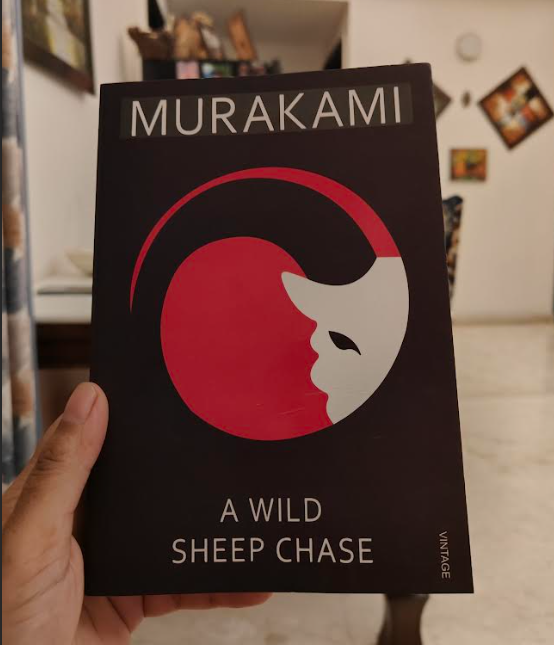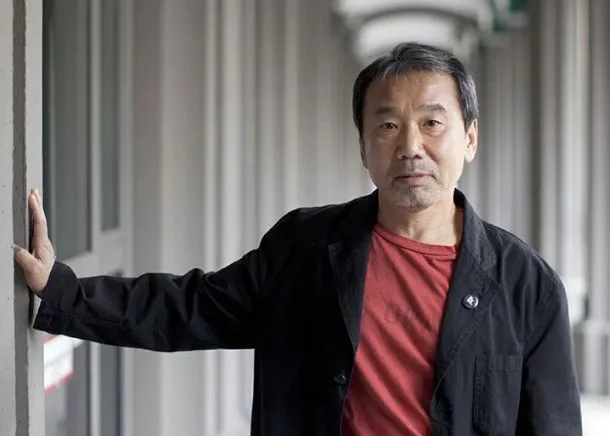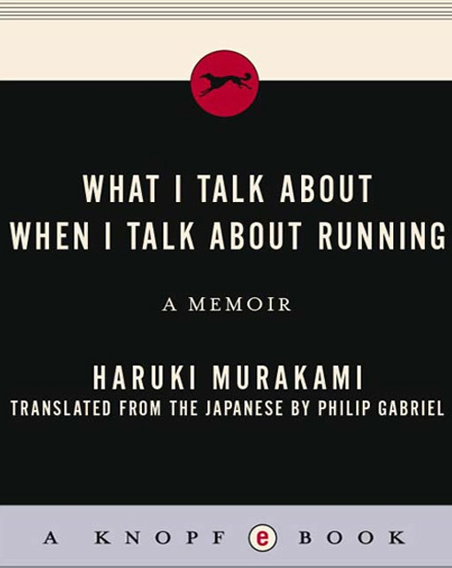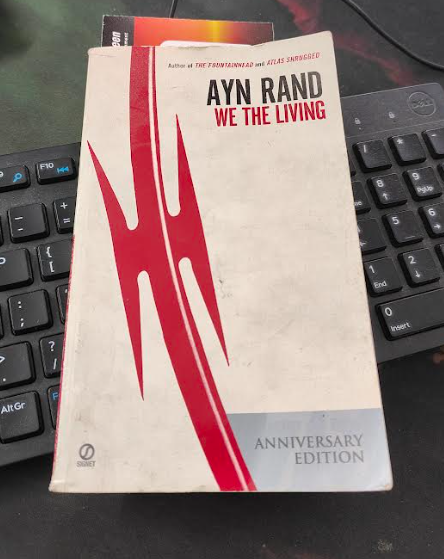
Have you ever felt like you’re dreaming with open eyes? If not, read A Wild Sheep Chase by Haruki Murakami. Last year, when I first read Kafka on the Shore, I remember closing the book and staring into nothing for a full minute. It was the kind of book that makes silence hum with meaning. Today, after finishing A Wild Sheep Chase, I felt that same humming.
This book doesn’t just explore what it means to be alive, but also what it feels like to be inside and influenced by something else, an unnamed feeling that we all feel sometimes, when our thoughts no longer feel like our own, or when our routines begin to speak for us.
Symbols That Haunt: How Murakami and Atwood Unravel the Everyday Self
At its surface, A Wild Sheep Chase is a story of a man who for some reasons, does not believe in having concrete relationships and as the book says it, a person living a “mediocre life”. He is also the narrator, who is a divorced, a chain-smoker, an emotionally disengaged advertising executive, and is dragged into a sheep-hunting escapade across Japan after unknowingly using a mysterious photograph in a company ad. Although this book is part of a series, I read it as a standalone novel.
While I was in it, I realized I’m constantly thinking/comparing it with Margaret Atwood’s The Edible Woman. In that story, a woman slowly begins to break down emotionally as she struggles with society’s expectations. The story shifts into a strange, dream-like battle over who she really is and whether she can be free. Similar to Murakami’s sheep, the symbols in Atwood’s book, like food, relationships, or her body, aren’t meant to be mysteries to solve. Instead, they become parts of her experience that she lives through. Both writers create ideas that feel like more than just words, they have a kind of powerful presence that gradually wears down the main characters from inside.
The Sheep that Rules
What makes this book interesting is how strange and unusual it is yet full of deep questions about ideas and life. The main sheep, a mysterious creature that takes control of people and influences important events across the country, is the kind of clever idea that Kafka might have appreciated. Like the bug in The Metamorphosis, the sheep in A Wild Sheep Chase is both bizarre and packed with meaning, while the Rat’s eventual self-sacrifice is chilling, but also deeply moving.
Ordinary Words for Extraordinary Realities
What makes Murakami’s writing so special is how he describes strange, unusual things in a simple and straightforward way. He doesn’t make surreal ideas seem strange or confusing, instead, he shares them in a clear and ordinary manner.
The unnamed girlfriend, with her beautiful and captivating ears, is one of the most mysterious characters in the story. She feels like a typical character from Murakami’s books, someone who exists between the physical and spiritual worlds, as a bridge to something deeper. I found the similar streak in Norwegian Wood and Kafka on the Shore, they’re not just romantic interests, but symbols or gateways to a larger understanding.
Ghost Towns and Ghost Selves
Murakami’s landscapes have always fascinated me. The town of Junitaki-cho, crumbling and disintegrating in the snow, feels eerily familiar, not only in geography but also in spirit. It reminded me of the “walled city” in The City and Its Uncertain Walls, a place where time folds in on itself.
I was so much involved in the plot that when the moment comes when the narrator stares out at a conical mountain and feels something shift inside him, I felt it too. The book is full of such quiet moments where the everyday world seems to break apart and touch something deeper. In those parts, you feel that Murakami isn’t just telling a story. He’s building an emotional space, a place where sadness, boredom, and moments of deep meaning all exist together.
The Rat, the Sheep Man, and the Problem of Being
Much like the twin brothers in Dostoevsky’s The Brothers Karamazov, rational Ivan and spiritual Alyosha, Murakami gives us two poles of consciousness in the form of the Rat and the Sheep Man. The Rat, who was once the narrator’s friend and drinking partner, becomes both the one who sacrifices himself and the last voice speaking out against human flaws. His decision to take his own life after being taken over by the sheep is Murakami’s most somber statement, showing that staying true to yourself can come at the greatest price, sometimes even your life.
It made me wonder what it really means to stand up against something so big and hard to define, like power, fitting in, or even slowly losing sight of what truly matters. The Rat’s final action isn’t just sad, it’s a quiet act of courage that stays with you. In a world where outside forces can change who we are, his choice to resist being completely consumed by the herd feels like a desperate attempt to stay true to himself. It makes you ask an uncomfortable question: how much of ourselves do we unknowingly give away just to get through the day? And is there any way to reclaim that lost part of ourselves, even if we feel it’s too late?

What Are We Chasing, Really?
At its core, “A Wild Sheep Chase” is a story about holding on to things, our bodies, our thoughts, and what we believe gives life meaning. But it’s also about learning to let go. The sheep in the story stands for something very real in our lives, the mystery and unpredictability that modern life attempts to control but can’t. It represents the feeling that there’s always a bit of emptiness or uncertainty at the heart of everything we do.
Murakami doesn’t give us clear answers. His girlfriend disappears. The Rat is no longer present. The Boss passes away. The sheep might still be around or maybe not. But like the best stories, A Wild Sheep Chase doesn’t really have a tidy ending. Instead, it stays with the reader, feeling unfinished and stuck in their mind, and honestly, I have no idea why I’d like to stay in this feeling for some time.
Takeaway
Reading A Wild Sheep Chase reminded me why I read books in the first place, not just for stories, but for the frameworks they offer to understand our own fragmented lives. It’s a novel that invites rereading, not because you missed something, but because it missed you the first time.
The sheep in the novel is a metaphor. Jorge Luis Borges, an Argentine writer, poet, essayist, and librarian often pointed out that metaphors are more than just pretty words, they are essential to how we think, feel, and make sense of the world. He believed that metaphors play a key role in helping us understand meaning, not just in decorating our speech. Putting this idea into Murakami’s sheep equation, I find that sheep are more than just symbol of mystery or strength, in fact it could represent some of the hidden thoughts and feelings we carry inside us, our desire to find meaning, our connection to things we don’t fully understand, and the unsettling idea that the meaning of our lives might be built from illusions or ideas we decide to believe.
To read A Wild Sheep Chase is to acknowledge that life’s most profound questions are not puzzles to be solved once and for all, but invitations to return again and again, each time discovering a new layer of truth hiding behind the next unlikely symbol.
So if you want to take a dip into something that’s strange, thoughtful, and quietly transformative, go ahead and pick up this book when you’re ready to sit with questions rather than chase answers. Read it when you’re feeling lost, when routines feel too tight, or when the world starts to seem too clean-cut to be true. Murakami doesn’t offer conclusions, he offers spaces, silences, and symbols that echo long after the final page. Let this be the book you read not to find something, but to feel something shift inside you.



